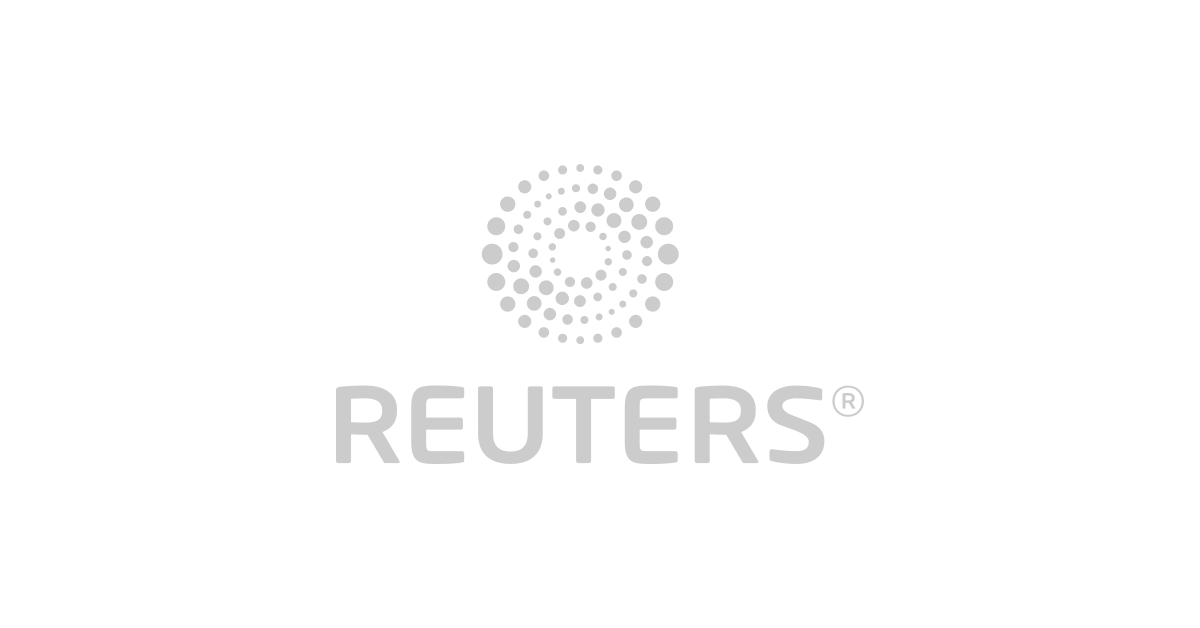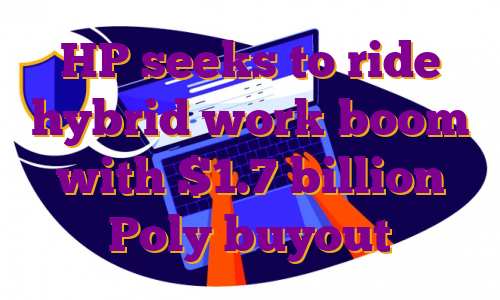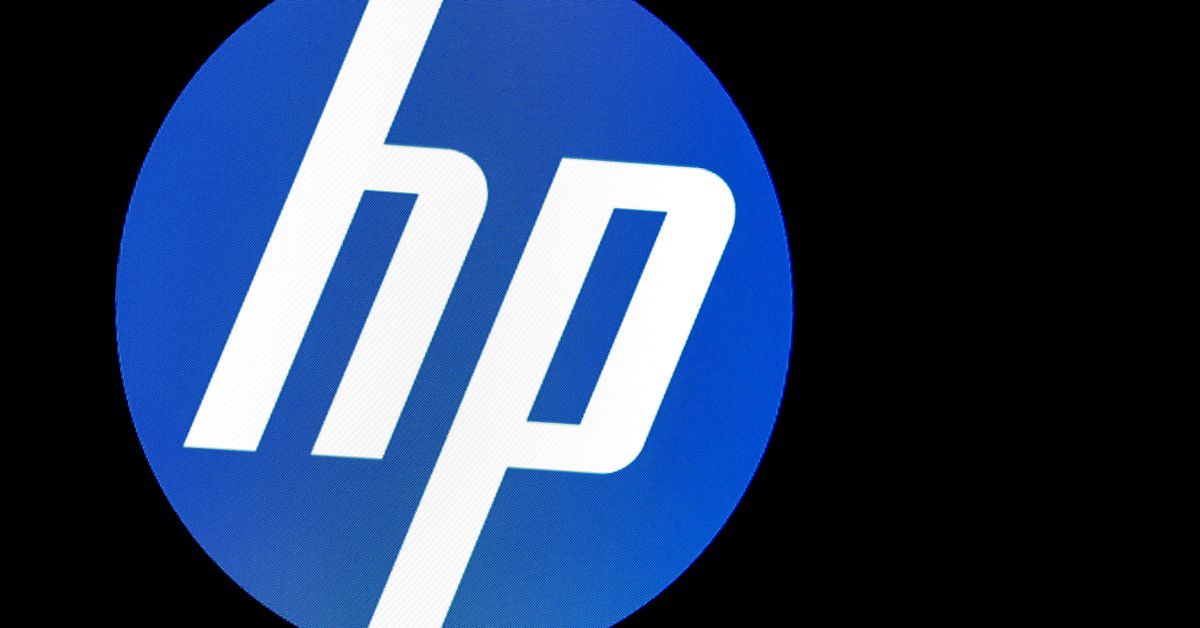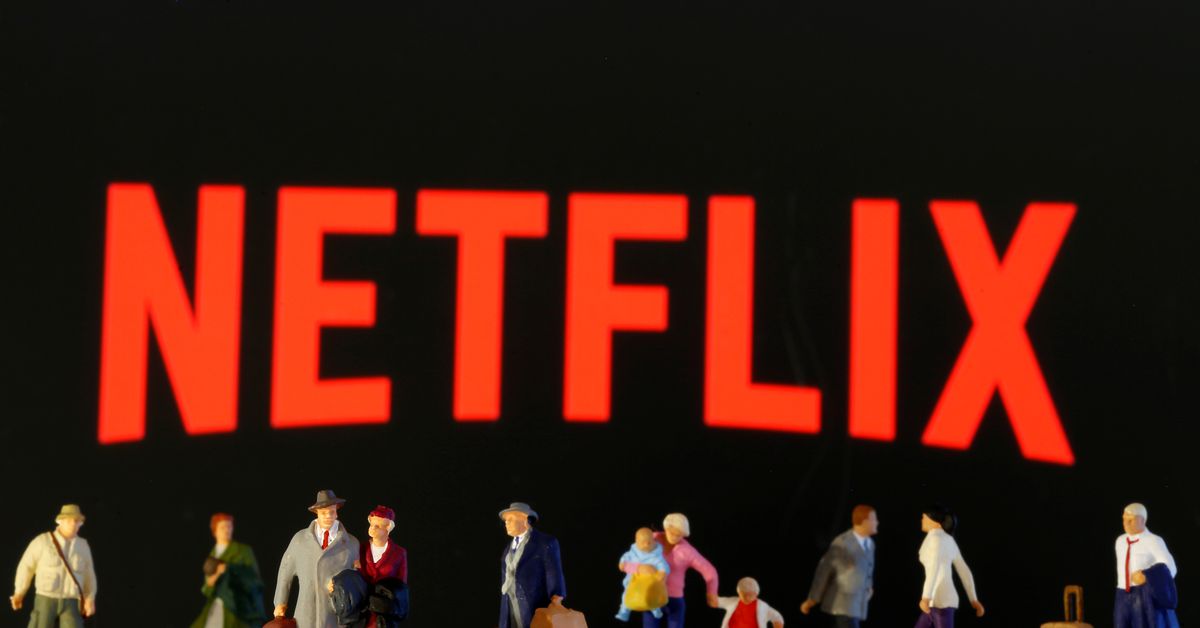LONDON, March 29 (Reuters) – London Metal Exchange (LME) zinc recorded a new all-time high of $4,896 per tonne earlier this month, eclipsing the previous 2006 peak of $4,580 per tonne.True, the March 8 spike was over in a matter of hours and looked very much like the forced close-out of positions to cover margin calls in the LME nickel contract, which was imploding at the time before being suspended.But zinc has since re-established itself above the $4,000 level, last trading at $4,100 per tonne, amid escalating supply chain tensions.Register now for FREE unlimited access to Reuters.comRussia’s invasion of Ukraine, which Moscow calls a special military operation, doesn’t have any direct impact on zinc supply as Russian exports are negligible.But the resulting increase in energy prices is piling more pressure on already struggling European smelters.European buyers are paying record physical premiums over and above record high LME prices, a tangible sign of scarcity which is now starting to spread to the North American market.The world is not yet running out of the galvanising metal but a market that even a few months ago was expected to be in comfortable supply surplus is turning out to be anything but.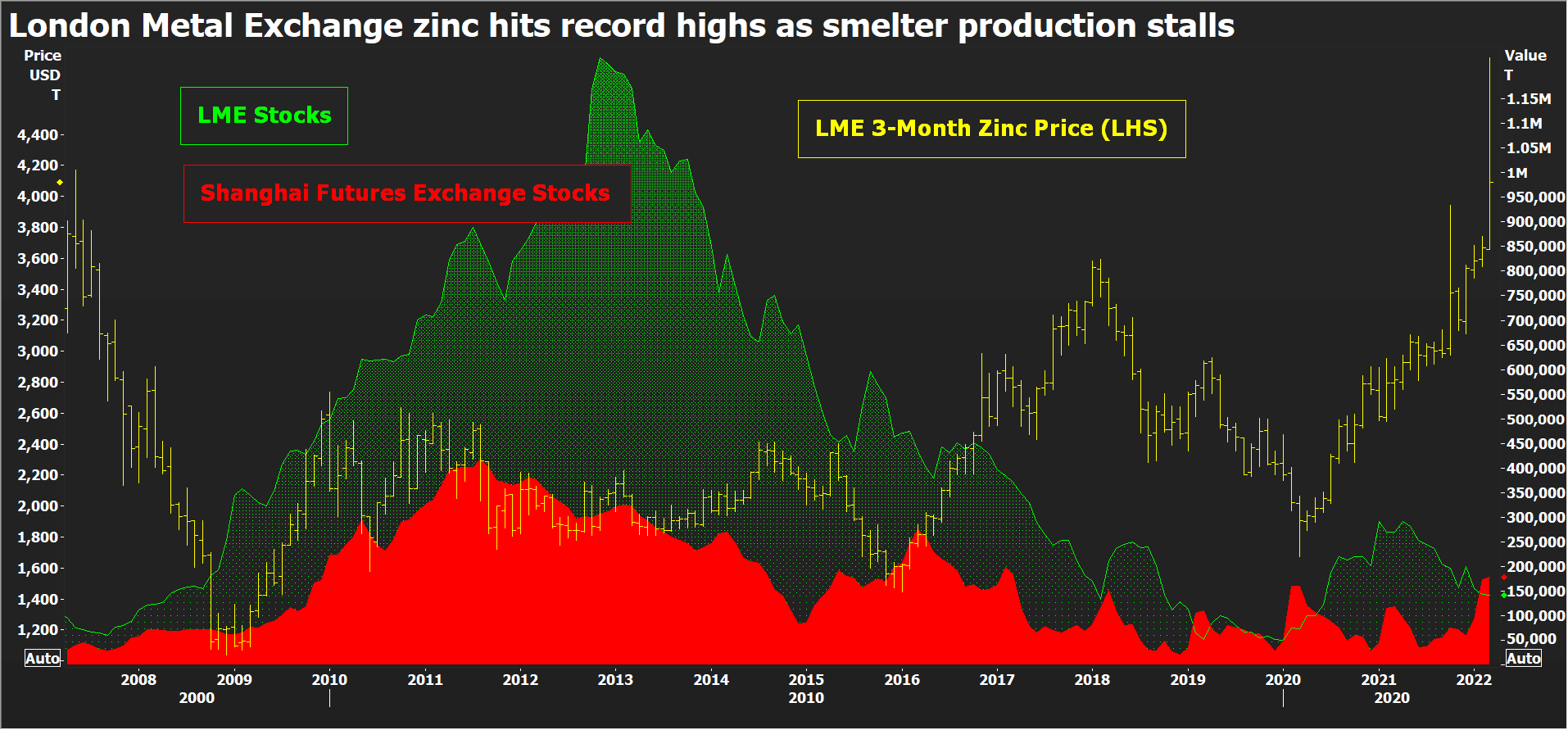 LME zinc price and stocks, Shanghai stocksEUROPEAN POWER-DOWNOne European smelter – Nyrstar’s Auby plant in France – has returned to partial production after being shuttered in January due to soaring power costs. But run-rates across the company’s three European smelters with combined annual capacity of 720,000 tonnes will continue to be flexed “with anticipated total production cuts of up to 50%”, Nyrstar said.High electricity prices across Europe mean “it is not economically feasible to operate any of our sites at full capacity”, it said.Still on full care and maintenance is Glencore’s (GLEN.L) 100,000-tonne-per-year Portovesme site in Italy, another power-crisis casualty.Zinc smelting is an energy-intensive business and these smelters were already in trouble before Russia’s invasion sent European electricity prices spiralling yet higher.Record-high physical premiums, paid on top of the LME cash price, attest to the regional shortage of metal. The premium for special-high-grade zinc at the Belgian port of Antwerp has risen to $450 per tonne from $170 last October before the winter heating crisis kicked in.The Italian premium has exploded from $215.00 to $462.50 per tonne over the same time frame, according to Fastmarkets.LME warehouses in Europe hold just 500 tonnes of zinc – all of it at the Spanish port of Bilbao and just about all of it bar 25 tonnes cancelled in preparation for physical load-out.Tightness in Europe is rippling over the Atlantic. Fastmarkets has just hiked its assessment of the U.S. Midwest physical premium by 24% to 26-30 cents per lb ($573-$661 per tonne).LME-registered stocks in the United States total a low 25,925 tonnes and available tonnage is lower still at 19,825 tonnes. This time last year New Orleans alone held almost 100,000 tonnes of zinc.
LME zinc price and stocks, Shanghai stocksEUROPEAN POWER-DOWNOne European smelter – Nyrstar’s Auby plant in France – has returned to partial production after being shuttered in January due to soaring power costs. But run-rates across the company’s three European smelters with combined annual capacity of 720,000 tonnes will continue to be flexed “with anticipated total production cuts of up to 50%”, Nyrstar said.High electricity prices across Europe mean “it is not economically feasible to operate any of our sites at full capacity”, it said.Still on full care and maintenance is Glencore’s (GLEN.L) 100,000-tonne-per-year Portovesme site in Italy, another power-crisis casualty.Zinc smelting is an energy-intensive business and these smelters were already in trouble before Russia’s invasion sent European electricity prices spiralling yet higher.Record-high physical premiums, paid on top of the LME cash price, attest to the regional shortage of metal. The premium for special-high-grade zinc at the Belgian port of Antwerp has risen to $450 per tonne from $170 last October before the winter heating crisis kicked in.The Italian premium has exploded from $215.00 to $462.50 per tonne over the same time frame, according to Fastmarkets.LME warehouses in Europe hold just 500 tonnes of zinc – all of it at the Spanish port of Bilbao and just about all of it bar 25 tonnes cancelled in preparation for physical load-out.Tightness in Europe is rippling over the Atlantic. Fastmarkets has just hiked its assessment of the U.S. Midwest physical premium by 24% to 26-30 cents per lb ($573-$661 per tonne).LME-registered stocks in the United States total a low 25,925 tonnes and available tonnage is lower still at 19,825 tonnes. This time last year New Orleans alone held almost 100,000 tonnes of zinc.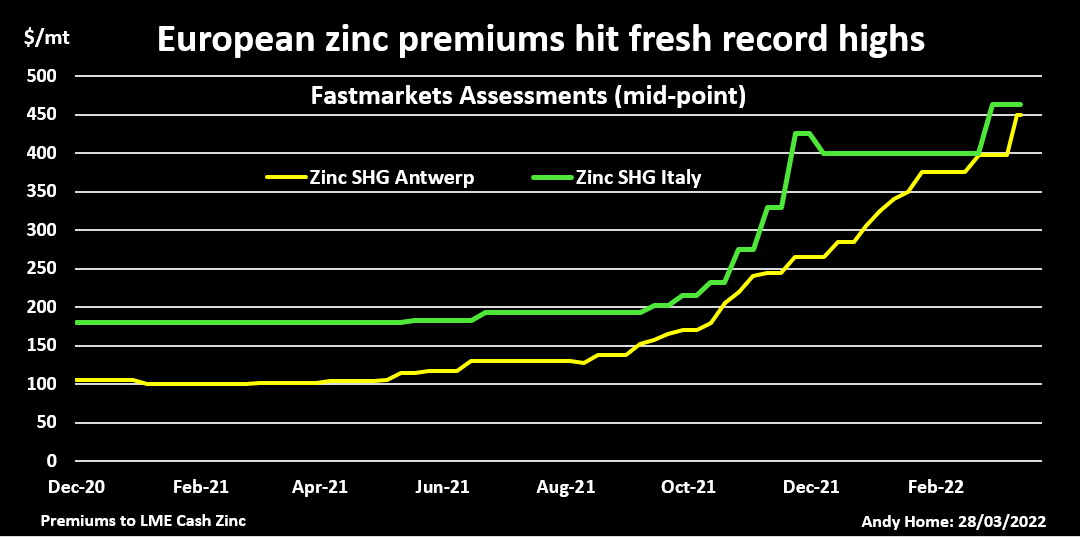 Fastmarkets Assessments of Antwerp and Italian physical zinc premiumsREBALANCING ACTAbout 80% of the LME’s registered zinc inventory is currently located at Asian locations, first and foremost Singapore, which holds 81,950 tonnes.There is also plenty of metal sitting in Shanghai Futures Exchange warehouses. Registered stocks have seen their usual seasonal Lunar New Year holiday surge, rising from 58,000 tonnes at the start of January to a current 177,826 tonnes.Quite evidently Asian buyers haven’t yet been affected by the unfolding supply crunch in Europe and there is plenty of potential for a wholesale redistribution of stocks from east to west.This is what happened last year in the lead market, China exporting its surplus to help plug gaps in the Western supply chain. Lead, however, should also serve as a warning that global rebalancing can be a slow, protracted affair due to continuing log-jams in the shipping sector.MOVING THE GLOBAL DIALWhile there is undoubted slack in the global zinc market, Europe is still big enough a refined metal producer to move the market dial.The continent accounts for around 16% of global refined output and the loss of production due to the regional energy crisis has upended the zinc market narrative.When the International Lead and Zinc Study Group (ILZSG) last met in October, it forecast a global supply surplus of 217,000 tonnes for 2021.That was already a sharp reduction from its earlier April assessment of a 353,000-tonne production overhang. The Group’s most recent calculation is that the expected surplus turned into a 194,000-tonne shortfall last year. The difference was almost wholly down to lower-than-forecast refined production growth, which came in at just 0.5% compared with an October forecast of 2.5%.With Chinese smelters recovering from their own power problems earlier in the year, the fourth-quarter deceleration was largely due to lower run-rates at Europe’s smelters.The ILZSG’s monthly statistical updates are inevitably a rear-view mirror but Europe’s production losses have continued unabated over the first quarter of 2022.Moreover, the scale of the shift higher in power pricing, not just spot but along the length of the forward curve, poses a longer-term question mark over the viability of European zinc production.A redistribution of global stocks westwards can provide some medium-term relief but zinc supply is facing a new structural challenge which is not going away any time soon.The opinions expressed here are those of the author, a columnist for Reuters.Register now for FREE unlimited access to Reuters.comEditing by David ClarkeOur Standards: The Thomson Reuters Trust Principles.Opinions expressed are those of the author. They do not reflect the views of Reuters News, which, under the Trust Principles, is committed to integrity, independence, and freedom from bias. .
Fastmarkets Assessments of Antwerp and Italian physical zinc premiumsREBALANCING ACTAbout 80% of the LME’s registered zinc inventory is currently located at Asian locations, first and foremost Singapore, which holds 81,950 tonnes.There is also plenty of metal sitting in Shanghai Futures Exchange warehouses. Registered stocks have seen their usual seasonal Lunar New Year holiday surge, rising from 58,000 tonnes at the start of January to a current 177,826 tonnes.Quite evidently Asian buyers haven’t yet been affected by the unfolding supply crunch in Europe and there is plenty of potential for a wholesale redistribution of stocks from east to west.This is what happened last year in the lead market, China exporting its surplus to help plug gaps in the Western supply chain. Lead, however, should also serve as a warning that global rebalancing can be a slow, protracted affair due to continuing log-jams in the shipping sector.MOVING THE GLOBAL DIALWhile there is undoubted slack in the global zinc market, Europe is still big enough a refined metal producer to move the market dial.The continent accounts for around 16% of global refined output and the loss of production due to the regional energy crisis has upended the zinc market narrative.When the International Lead and Zinc Study Group (ILZSG) last met in October, it forecast a global supply surplus of 217,000 tonnes for 2021.That was already a sharp reduction from its earlier April assessment of a 353,000-tonne production overhang. The Group’s most recent calculation is that the expected surplus turned into a 194,000-tonne shortfall last year. The difference was almost wholly down to lower-than-forecast refined production growth, which came in at just 0.5% compared with an October forecast of 2.5%.With Chinese smelters recovering from their own power problems earlier in the year, the fourth-quarter deceleration was largely due to lower run-rates at Europe’s smelters.The ILZSG’s monthly statistical updates are inevitably a rear-view mirror but Europe’s production losses have continued unabated over the first quarter of 2022.Moreover, the scale of the shift higher in power pricing, not just spot but along the length of the forward curve, poses a longer-term question mark over the viability of European zinc production.A redistribution of global stocks westwards can provide some medium-term relief but zinc supply is facing a new structural challenge which is not going away any time soon.The opinions expressed here are those of the author, a columnist for Reuters.Register now for FREE unlimited access to Reuters.comEditing by David ClarkeOur Standards: The Thomson Reuters Trust Principles.Opinions expressed are those of the author. They do not reflect the views of Reuters News, which, under the Trust Principles, is committed to integrity, independence, and freedom from bias. .
HP seeks to ride hybrid work boom with $1.7 billion Poly buyout
March 28 (Reuters) – HP Inc (HPQ.N) said on Monday it would buy audio and video devices maker Poly (POLY.N) for $1.7 billion in cash as it looks to capitalise on the hybrid work led boom in demand for electronic products.Shares in HP, which expects the deal will position it for long-term growth, fell 1.4% in premarket trade.The company has offered $40 for each share of Poly, formerly known as Plantronics, which represents a premium of about 53% to the stock’s last closing price. Including debt, the deal is valued at $3.3 billion.Register now for FREE unlimited access to Reuters.com“The rise of the hybrid office creates a once-in-a-generation opportunity to redefine the way work gets done,” HP Chief Executive Officer Enrique Lores said.With the global healthcare crisis boosting the need for hybrid work, the market has seen several acquisitions, including business software maker Salesforce.com’s (CRM.N) $27.7-billion purchase of workplace messaging app Slack Technologies Inc last year. read more Poly, whose shares rose 49% in premarket trade, said it would be required to pay a fee of $66 million if the deal is terminated.The transaction is expected to close by the end of 2022.Register now for FREE unlimited access to Reuters.comReporting by Tiyashi Datta in Bengaluru; Editing by Aditya Soni and Vinay DwivediOur Standards: The Thomson Reuters Trust Principles. .
Sycamore can relieve Ted Baker from its misery
The Ted Baker logo is seen in Central Valley, New York, U.S., February 15, 2022. REUTERS/Andrew KellyRegister now for FREE unlimited access to Reuters.comMILAN, March 18 (Reuters Breakingviews) – Sycamore Partners is digging in the fashion discount corner. The U.S. fund, which specialises in struggling retail assets, said on Friday that it could make a cash offer for hard-pressed British fashion firm Ted Baker (TED.L), triggering a 19% rally in its stock. For investors, the approach is a way of escaping the clutches of founder and former Chief Executive Ray Kelvin, whose overenthusiastic hugging habits led to his resignation in 2019 and a share price rout. Ted Baker shares are worth less than a tenth of their value before the scandal erupted.For Sycamore, it looks like an easy win. Assuming the U.S. fund pays 230 million pounds, a roughly 30% premium to Thursday’s market value, it could make a chunky 30% internal rate of return by simply growing revenue at 5% a year for five years and hiking the EBITDA margin to 12%, Breakingviews calculations show. That suggests the retailer may be worth more. Despite uncertainties in Europe because of the Ukrainian conflict, Ted Baker has worked hard to reduce its discounted sales to protect margins. Sycamore has ample wiggle room to pull investors from their misery. (By Lisa Jucca)Follow @Breakingviews on TwitterRegister now for FREE unlimited access to Reuters.comCapital Calls – More concise insights on global finance:Tencent WeChat Pay rejig would have 1 bln problems read more KKR property deal threads the needle in Japan read more Electric-car makers need to stay on their diet read more Online grocer woes imply fresh price wars read more China Swiss IPOs as predictable as a cuckoo clock read more Register now for FREE unlimited access to Reuters.comEditing by Ed Cropley and Oliver TaslicSign up for a free trial of our full service at https://www.breakingviews.com/trial and follow us on Twitter @Breakingviews and at www.breakingviews.com. All opinions expressed are those of the authors. .
Ping An Insurance profit falls 29% amid premium income pressure
File Photo: A man walks past a branch of Ping An Bank, a subsidiary of Ping An Insurance, in Beijing, China. REUTERS/Thomas PeterRegister now for FREE unlimited access to Reuters.com
- Ping An annual net profit tanks 29% on year
- Life, property and casualty insurance premiums down
- Agent numbers slashed, bodes ill for future sales
SHANGHAI, March 17 (Reuters) – China’s Ping An (601318.SS), , the country’s largest insurer by market value, reported its biggest annual profit fall since 2008 on Thursday amid pressure on its premium income.Ping An posted a 29% fall in annual net profit to 101.6 billion yuan ($16 billion)in 2021 from 143.1 billion yuan, as premium income from life insurance fell 4.1% year-on-year to 490.3 billion yuan, while property and casualty insurance premium income fell 5.5% to 270 billion yuan.”Complex, severe economic situations across the world and resurgences of COVID-19 increased uncertainty in resident income expectations in 2021,” Ping An said in a filing, and this “tempered consumer spending on long-term protection products”.Register now for FREE unlimited access to Reuters.comAnother factor was a fall in the number of Ping An sales agents fell, which meant that its new business value of life and health insurance sank 23.6% to 37.9 billion yuan.Its army of insurance agents, once the jewel in Ping An’s crown, is set to shrink further, putting more pressure on sales.”In 2022, the number of agents may still fall quite a lot compared to the year before,” Huatai Securities said in a note published this month, adding that this “can only have an impact on the growth of new insurance policies”.PROPERTY EXPOSUREPing An has been shaken by growing concerns about its investments in a highly indebted property sector which faces a liquidity crunch amid a crackdown by Beijing on borrowing.While there are suggestions of an easing — from exempting M&A financing from the tighter restrictions to loosening mortgage lending — many developers are still feeling liquidity pressure, two people with knowledge said.Ping An said it had a total exposure of 54 billion yuan ($8.4 billion) to China Fortune Land Development Co last year as the developer faced mounting default pressure.Some analysts cautioned that the total property exposure of Ping An is much higher and still underestimated by the market, which will poses further credit risks.However, its Ping An Bank Co Ltd reported a 25.6% increase in annual profit for last year, compared to 2020, with the bank’s non-performing loan ratio down to 1.02% at end of December, from 1.05% three months ago.Ping An’s Shanghai-listed shares are down 9.72% in the year to date, compared with a 11.62% drop in the benchmark Shanghai Composite Index and a 8.11% fall in Hang Seng index.Register now for FREE unlimited access to Reuters.comReporting by Engen Tham, Zhang Yan; Editing by Alexander SmithOur Standards: The Thomson Reuters Trust Principles. .
Netflix tests sharing accounts outside household
Small toy figures are seen in front of diplayed Netflix logo in this illustration taken March 19, 2020. REUTERS/Dado Ruvic/IllustrationRegister now for FREE unlimited access to Reuters.comMarch 16 (Reuters) – Netflix Inc is testing features including one that will allow accounts to be shared outside members’ household at an extra cost, the streaming pioneer said on Wednesday.The company is testing the features in Chile, Costa Rica and Peru allowing members on its standard and premium plans to add up to two people.Netflix is also studying another feature that will allow members on a basic, standard or premium plan to transfer their profile information to a new account or a sub account retaining data such as viewing history and personalized recommendations. (https://bit.ly/3CLKbF2)Register now for FREE unlimited access to Reuters.comThe company currently allows people who live together to share their Netflix account. However, the plans have created some confusion about when and how accounts can be shared, the company said, adding it is impacting its ability to invest in new content.The company said it would test the features for their utility before making changes in other parts of the world.Netflix in January tempered its growth expectations, projecting customer additions in the first-quarter at less than half of Wall Street’s expectations citing the late arrival of anticipated content. read more Register now for FREE unlimited access to Reuters.comReporting by Akash Sriram in Bengaluru; Editing by Shailesh KuberOur Standards: The Thomson Reuters Trust Principles. .


